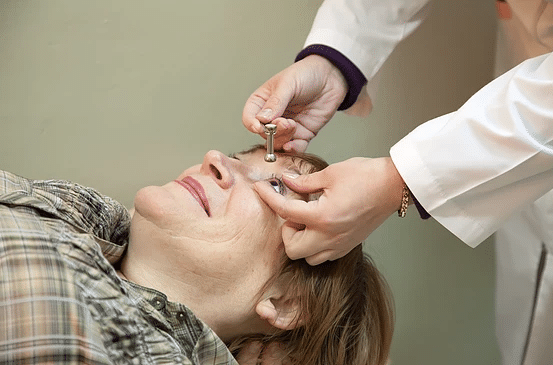How is glaucoma detected & diagnosed?
Glaucoma is a common eye condition screened for by optometrists. It happens when the optic nerve, which connects the eye to the brain, becomes damaged. It’s usually caused by fluid building up in the front part of the eye, which increases pressure inside the eye. There is a less common acute form which causes angle closure glaucoma.
The condition in the non-acute form of glaucoma is asymptomatic and requires regular examinations to ensure you do not develop the condition. The eye test is covered by the NHS for certain direct relatives of glaucoma sufferers, as it can be a hereditary complaint.
There are several quick and painless tests that can be carried out by an optometrist during the course of a routine eye examination to detect whether glaucoma is present.

The back of the eyes are examined using various techniques. For example, either in the form of a hand held ophthalmoscope or an indirect headset or using a widefield retinal laser scanner such as the Optomap test.
An eye pressure test (tonometry) is routinely performed on patients over 40 years of age and uses an instrument called a tonometer to measure the pressure inside your eye.
There are two types of instruments used to test the pressure; the first being contact tonometry, where the optometrist will put a small amount of anaesthetic and dye into the front of your eye. They will then shine a light into your eye and gently touch the surface of it with the tonometer. The other method is non-contact, where the optometrist will use a different instrument that uses a puff of air and doesn’t touch the eye to check pressure.
These tests can be supplemented if needed by performing a visual field test which checks for missing areas of vision in your periphery.
You may be shown a sequence of light spots and asked to press a button to indicate which ones you can see. Some dots will appear at the edges of your vision (your peripheral vision), which is often the first area to be affected by glaucoma.
If your pressures are high and discs look suspect, you would likely be referred to the local eye hospital for further checks.
There are several different treatments for glaucoma, including eye drops, laser treatment and surgery. The best treatment for you will depend on your circumstances.
Related articles





